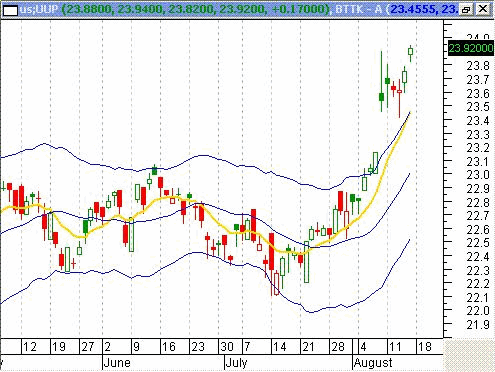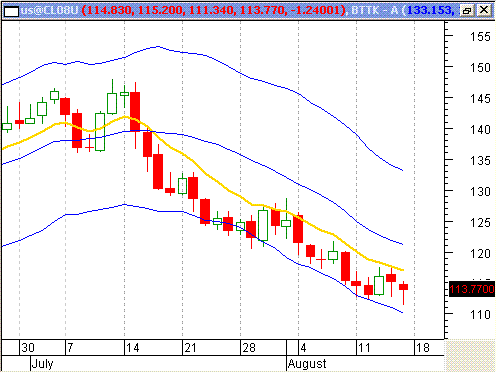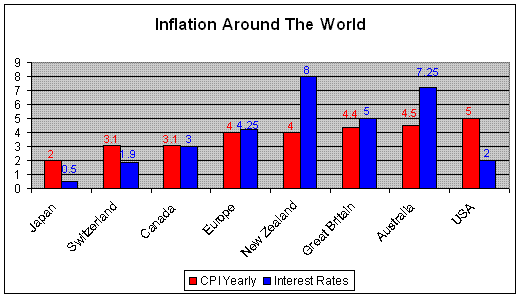| The Dawn of a New Dollar |
| By Price Headley |
Published
08/18/2008
|
Currency , Futures , Options , Stocks
|
Unrated
|
|
|
|
The Dawn of a New Dollar
Last week, the US dollar saw a rise to levels that we haven't seen since February 11 of this year. Currencies are usually traded on the strength of their corresponding economy, so the dollar in theory should be trading down with the continued credit crisis, housing problems, and concerns about rising inflation.

We really haven't received any good news about the state of the US economy in the past year, yet I have turned bullish on the US dollar long term. This can be explained by answering two questions: "How did last week's rally happen?" and "What should we expect for the future?"
How Did Last Week's Rally Happen?
As you can see from the chart below, crude oil has pulled back from the high of $147.90 to close at $113.77 last Friday, a 23% price correction. Oil, oil, and oil are the dominant reasons why the dollar had such a bullish run last week. In the short term, the dollar will trade in the opposite direction of crude oil.

What Should We Expect For The Future?
Last Thursday we received the US Consumer Price Index (CPI) numbers for July 2008. The data showed that from June to July, there was an 0.8% increase in consumer prices, and there has been an increase of 5.6% in the past year. Those numbers are high, but they need to be taken in context. If you take food and energy prices out of those numbers, the 0.8% monthly increase drops to 0.3% and the 5.6% yearly increase drops to a respectable 2.5%.
Furthermore, these numbers are July numbers. July saw crude oil reach an all-time high of $147.90 a barrel on July 11, before the recent pullback. And since the price of gasoline lags the price of oil by about two weeks, those effects weren't even seen at the pump until around July 25. With prices that high, it only stands to reason that energy, namely crude oil, is the story here.
You Think You Have It Bad?
As much as we hate high oil prices and rising inflation, the fact is that our situation could be a lot worse. When you compare the central bank interest rates and the inflation rate of the United States relative to other major countries around the world, we have a much stronger outlook for the future.
The chart below shows that the US has the highest rate of inflation amongst the world's major economies. No breaking news there. But what is interesting is that relative to Australia, Great Britain, New Zealand and Europe, we are the only country with high inflation and low interest rates.

The Fed has the ability to raise rates without over extending themselves. I expect them to do that over the next 12-18 months, getting rates back around the 4% level. Europe and Great Britain don't have the luxury of raising interest rates, as they are facing or even potentially in recession. If they raise rates, the recession deepens. If they lower rates, inflation is off to the races.
As the Fed slowly but surely begins to raise rates over the next year or so, the dollar will continue to gain strength. This will allow the US economy to naturally expand while the rest of the world contracts. We will have access to cheaper commodities around the world, lowering our cost of living.
Price Headley is the founder and chief analyst of BigTrends.com.
|